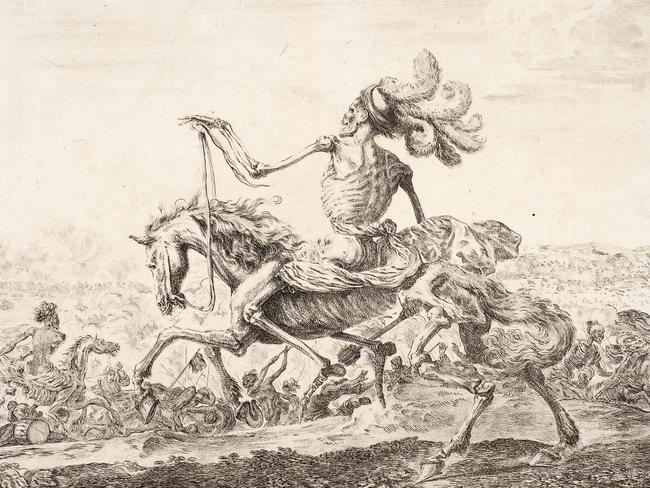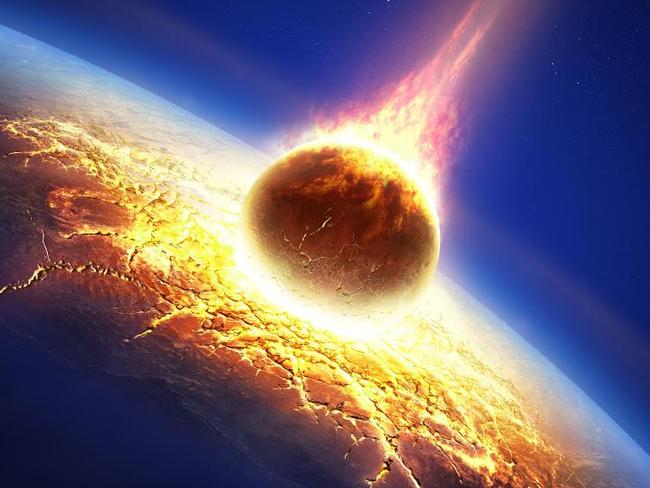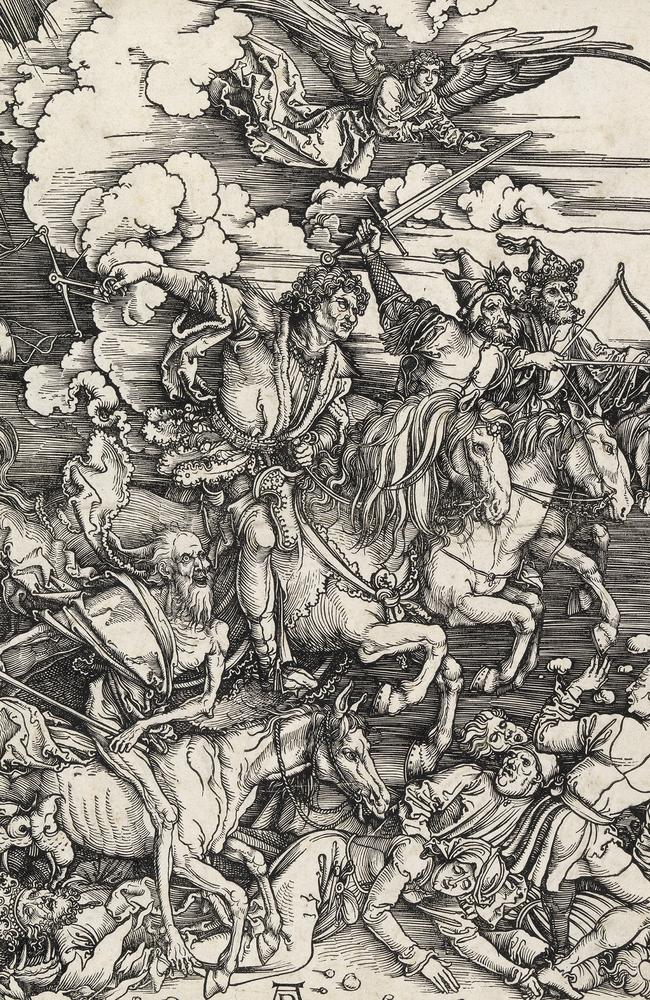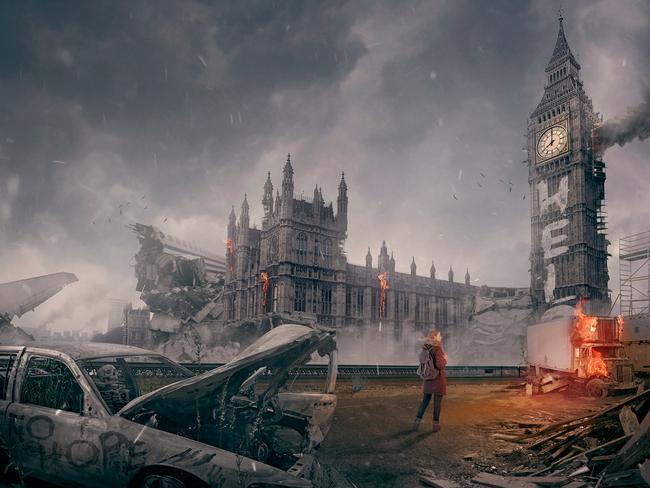Apocalypse Not: The times we didn’t all die in 2017
THE Earth dodged at least six apocalypses in 2017. But many people continue to believe we’re facing the end of days - and prophecies of doom still loom over us.
WHEN will it all end?
Whether with a sense of delight or dread, 2017 been full of anticipation.
The Christian rapture. A secular collision of worlds. The last great battle.
All were supposed to pan out in the past 12 months. Some more than once.
But 2017 is not unique.
End-time prophecies have been bandied about for all of recorded history.
Some came close to being self-fulfilling. But all eventually fell flat.
The fact you’re reading this means nothing has changed.
So why do people keep falling for apocalyptic prophecies?
Dr Michelle Arnold of the Flinders University School of Psychology says different types of prophecy likely appeal to different beliefs.
“However, one key factor that has been proposed is uncertainty; that is, believing in these types of prophecies may help give people a sense of certainty in an uncertain world,” she says.
And prophecies often seem convincing because they can trigger mental ‘rules of thumb’ — or reasoning shortcuts called heuristics — that can lead us up garden paths.
“In many situations heuristics work well by getting us to the correct answer quickly and efficiently,” Dr Arnold says. “However, because they are rules of thumb (e.g., not like an algorithm/formula that produces a correct answer with certainty) they do not guarantee we will be right because they are open to biases.”
So here’s a look at the 2017 that could have been — and a taste of what may be to come.
And then there’s a few clues on how not to fall for them.

JANUARY 1, 2017: BEGINNING OF THE END
The year was off to a good start when this one didn’t happen.
It was supposed to kick-off ‘the dying time’: The extermination of mankind.
Followers of the Sword of God Brotherhood were convinced this was it.
The Prophet Gabriel had revealed exclusively to them, they believed, that ‘hellfire’ was to be unleashed on this date. Only a chosen few (of which, of course, they belonged) would survive.
It turned out to quite-a-few. And there was little hellfire to speak of.
But the world may have taken a lurch in their desired direction.
The death cult is reportedly an offshoot of a US white supremacist group.
Calling themselves The Covenant, the Sword, and the Arm of the Lord, the survivalist group was established in 1971 in Michigan. It was apparently disbanded after its compound was raided by authorities in 1985.
But its prophecy lived on.
EXPLORE MORE: The apocalyptic prophecy behind Islamic State
It was a vision which found support in another cult calling itself ‘Daniel’s Timeline’.
It cited — as many apocalypse prophets do — the Old Testament Book of Daniel.
Their argument went something like this:
“According to Old Testament law, Jubilee years occur every fiftieth year and they are times when all debts are discharged and all property is returned to its rightful owner. Jubilee years are supposed to be times of celebration, but they can also be times of momentous change. In addition, biblical prophecies indicate that the 120th Jubilee year in particular, which will fall in 2017, will bring about cataclysmic change.”
Somewhere, someone was wrong.

A HEARTBEAT AWAY FROM DOOM
Another of the prophecies applying to the past year is actually quiet old.
This one doesn’t explicitly specify 2017, though it certainly falls within its scope.
The 12th Century Irish bishop Saint Malachy decreed only 112 popes would take up St Peter’s throne in the Vatican following the 1143AD election of Pope Celestine II.
Pope Francis is the 112th.
So, according to Saint Malachy, the apocalypse has been just a heartbeat away since his election on March 13, 2013.
Not that 2017 is any more likely to have seen his death than 2016, or 2014. But Pope Francis isn’t exactly a spring chicken. He was 76 when elected. Now an octogenarian, his time is certainly winding down.
Watch this space.

NIBIRU: AGAIN, AND AGAIN — AND AGAIN
The idea of an invisible planet — inhabited by aliens — circling our Sun on an odd orbit has been around for decades. It’s been linked to a many supposedly apocalyptic events — including 2012’s Mayan Apocalypse.
Supposedly sourced from ancient Sumerian writings, author David Meade has baked the idea with biblical interpretations, numerology and astrology.
Nevermind that the bible explicitly bans astrology.
He’s since come up with a few dates.
The first was September 23. There was a ‘rare’ alignment of the Sun and Moon with the constellation of Virgo. There were nine stars and three plants clustered about the constellation’s head — like a ‘crown’.
(This has actually happened many times before — including in 1827, 1483, 1293 and 1056, according to EarthSky.)
Graft this astrological observation with the Bible’s Revelation 12: “A great sign appeared in heaven: a woman clothed with the sun, with the moon under her feet and a crown of twelve stars on her head. She was pregnant and cried out in pain as she was about to give birth.”
Meade was doubly convinced this was it. September 23 was also 33 days after a total solar eclipse crossed the United States (exactly why the US is significant in biblical terms is apparently taken for granted). And 33 was important as it is the speculated age of Jesus at his death.
With further convoluted interpretation and numerological gymnastics, Meade came to the conclusion Planet Nibiru would be passing close to the Earth — sparking a series of cataclysms that represented seven years of Tribulation leading to the return of Christ.
But not a single astronomer had seen any hint of such a planet as it supposedly crossed the orbits of Neptune, Uranus, Saturn, Jupiter and Mars on its way towards Earth in recent decades.
On September 23, nothing happened.
A quick revision of the writings, a few tweaked sums and adjusted roundings to be sure … and a new date was settled on.
October 15.
Nothing happened.
Yet another urgent review came up with the ultimate interpretation of prophecy: November 19.
We’re still here.
DELVE DEEPER: Is Dark Matter behind mass extinctions?
NASA is well within its rights to say “we told you so”. In 2011 it released a YouTube video detailing how Nibiru could not possibly exist. A planet-sized object moving within our solar system would be easily detectable — both from the gravity influence it exerted upon other worlds and the sunlight it reflected.
There could well be a real Planet X out there: the gentle shaping of asteroid and comet orbits far beyond the orbit of Pluto suggests a planet-sized gravitational influence out in the solar system’s extreme outskirts.
But this hypothesis is yet to be proven. Astronomers around the world are taking the measurements, making the observations and doing the number-crunching that will reveal if its exists — or does not.

END TIMES TO COME?
The past few centuries have shown us failed prophecies do little to prevent new ones from arising.
What we do know is, eventually someone will probably get it right.
The world will end. And if new predictions keep getting churned out, the odds are highly likely at least one will fall close to whatever apocalypse unfolds.
And there is no shortage of predictions and prophecies attempting just that.
Hal Linsey declared 1988 would result in Armageddon and the second coming of Christ.
An urgent revision was needed once this didn’t eventuate. His original prophecy hinged on the idea that the Second Coming would happen one generation after the nation of Israel was re-established.
RELATED: The comet that killed Atlantis is on its way back. Did it? Is it?
Linsey’s problem, he says, was the definition of ‘generation’.
Exactly how long are they, anyway?
Some feel it’s just 10-15 years — thus the definitions of Baby Boomer, Generation X, Generation Y and Millennial so often bandied about.
Lindsey felt time flows differently in Biblical terms (Adam was supposed to have lived 930 years, and Noah 950), so he settled on a 40 year generational cycle.
But, apparently, he was wrong.
Revisions and fresh calculations produced another Biblical figure: This time it came up with 70 years.
So the new date is 2018.

So why is the apocalypse an exclusively Christian matter?
It isn’t.
The Jewish Talmud has been interpreted to place the date of the apocalypse at 2240.
The argument goes that God declared ‘let there be light’ 3760 years before the birth of Christ.
According to the Talmud, there will be 1000 years of existence for every day God took to create the world.
The seventh day, when he rested, will coincide with a tumultuous transition into 1000 years of earthly rule by a messiah.
Do the maths, and 6000 years of creation expires in 2240.
And then there’s the Koran Code … which also uses the dubious art of numerology to put the end at 2280.
EXPLORE MORE: 14 ‘Death Stars’ tracked heading our way
Admittedly, someone is going to get a prophecy (sort of) right eventually — through a simple process or elimination.
If no Messianic despot unleashes nuclear war. If no workings of celestial clockwork bring an asteroid within Earth’s embrace. If no plague turns us into hordes of zombies … our Sun will eventually run out of fuel.
As it begins to eat itself in its final years, it will expand — burning our Earth to a crisp. That date is also a moving target: science does not yet fully understand all the forces at play within a living star.
But we’ve got a good 7.6 billion years to figure it out.

MENTAL LOOPHOLES
Bias. It’s all about seeing what we expect and want to see, often based on what we know.
It’s an inherent part of how our brains come to quick conclusions — with the least possible mental processing. But it can become particularly problematic when making decisions under conditions of uncertainty, says Dr Arnold.
And we live in uncertain times.
“Having uncertainty about relatively minor aspects of our lives, such as which brand of pet food is the best to buy, is unlikely to causes us much worry in the grand scheme of things,” Dr Arnold says.
But uncertainty related to the ‘state of the world’ — for example, the constant news stories about the threat of nuclear war, terrorist attacks, et cetera — produces anxiety and worry.
“Thus, for some people, believing in apocalypse-like prophecies may help with this worry and anxiety by giving them something to focus on and a goal to strive toward,” Dr Arnold says.
“For religious prophecies this goal may involve positioning yourself to be one of the chosen ‘saved’ on the day the world ends, whereas for secular prophecies (such as Y2K) the goal may be focused on preparing to survive the potentially harsh conditions created by a catastrophic event.”
It’s here that the mental shortcuts that serve us so well in day-to-day decision making begin to break down.
One demonstration comes from a simple test devised in the early 1970s.

Subjects were asked that, if they were to randomly select words from an English text, would it be more likely these words would start with the letter “r”, or have the letter “r” as its third letter.
Here the brain takes a shortcut known as the ‘availability heuristic’ to make its decision. It’s easier to think of words starting with ‘r’ than going through the repeated mental gymnastics needed to identify those with “r” as their third letter. As being easier to identify makes more ‘r’ starting words quickly available to the brain, it mistakenly becomes convinced that these are the more common words.
They’re not.
This is also part of the reasoning behind the popularity of apocalyptic prophecy. Because the tales, scenarios and mythologies are widely told, many people interpret this as being “more likely” than the unfamiliar, difficult to understand physics that rules it out.
This is then reinforced by another ‘heuristic’ — or mental shortcut — called confirmation bias.
“This involves searching out or only paying attention to information that supports a belief,” Dr Arnold says. “For example, the confirmation bias may sustain people’s belief in an apocalyptic prophecy because they start to focus on events, information, et cetera that seem to corroborate the prophecy.”
By focusing only on supporting evidence — and discarding information that could debunk it — their beliefs become strengthened.
“They also then have multiple examples to share with people as to why others should also believe in the prophecy,” she says.




